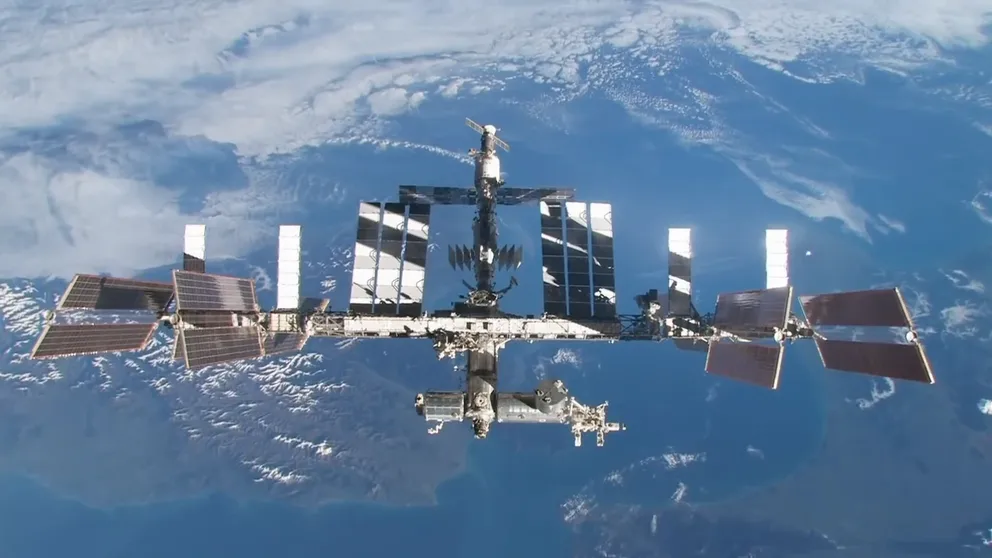The International Space Station explained: Two decades of astronauts living and working in space
The ISS has been continuously occupied by humans since 2000, making it the longest-occupied space station in history. On any given day, an average of seven astronauts are living and working in space.
What is the International Space Station?
The International Space Station (ISS) has hosted astronauts living and working in space for more than two decades, making groundbreaking contributions to technology and medicine along the way.
Have you ever gazed up at the night sky and wondered what it would be like to live in space?
The International Space Station (ISS) has been helping us to explore that reality for more than two decades, making groundbreaking contributions to technology and medicine along the way.
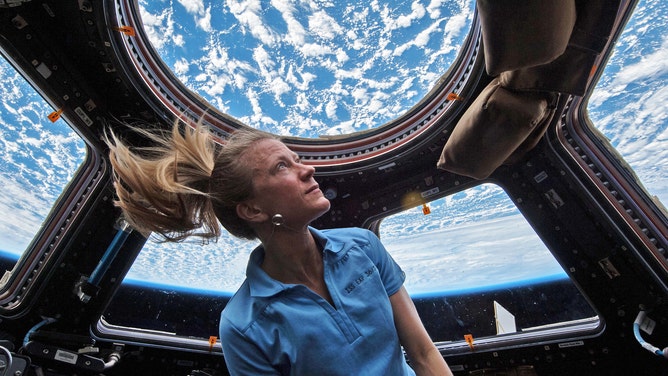
NASA astronaut Karen Nyberg enjoys the view of Earth from the windows in the Cupola of the International Space Station.
(NASA)
Orbiting about 250 miles above our planet, the ISS functions primarily as a space laboratory for a variety of scientific experiments and research studies that would not be possible on Earth.
One of the most ambitious international collaborations ever attempted, the ISS is the result of a partnership between five space agencies: NASA (United States), Roscosmos (Russia), JAXA (Japan), ESA (Europe) and CSA (Canada).
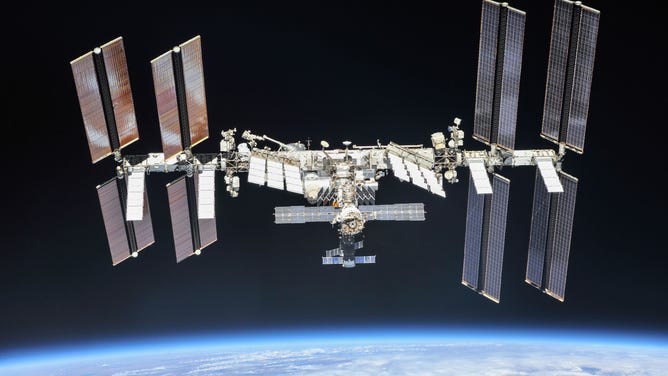
The International Space Station photographed by Expedition 56 crew members from a Soyuz spacecraft after undocking.
(NASA)
Construction begins in space
Construction on the project began in space in 1998 when the Russian Space Agency launched the first component.
The module, named Zarya or "sunrise" in English, served as a temporary control module for the station during its early stages of assembly.
A few weeks later, NASA launched Node 1 – the first U.S. ISS model – on Space Shuttle Endeavour.
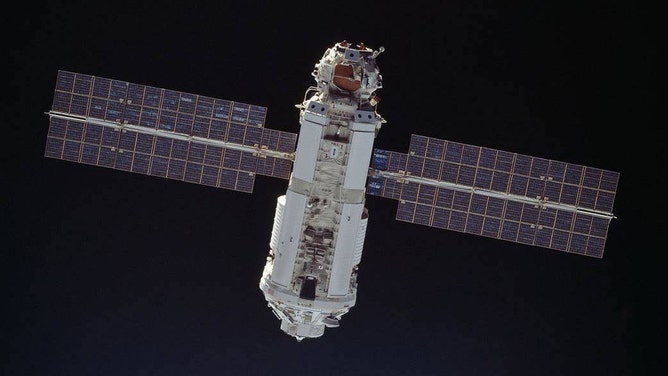
The Zarya Module, which means "sunrise" in English, was the first component launched for the International Space Station.
(NASA)
Ultimately, it took 10 years and more than 30 missions to complete assembly of the ISS, although it continues to undergo many expansions and upgrades.
Today, the ISS is the largest artificial satellite in orbit and can be seen from Earth with the naked eye, covering an area the size of a football field.
The station circles the planet once every 90 minutes, meaning that astronauts aboard the ISS have the unique opportunity to witness 16 sunrises and sunsets in one 24-hour period.
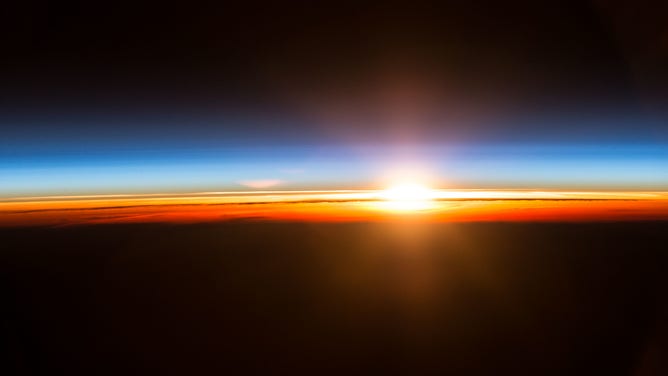
Sunrise is photographed aboard the International Space Station, one of the sixteen that can be seen from the orbiting laboratory every day.
(NASA)
A room with a view
The International Space Station has been continuously occupied by humans since 2000, making it the longest-occupied space station in history.
The station has a modular design, with pressurized modules that provide a livable habitat for the crew and unpressurized sections that house scientific experiments and solar panels.
The pressurized living and working space is comparable to the size of a large six-bedroom house, with six sleeping quarters, two bathrooms, a gym, and a 360-degree view bay window.
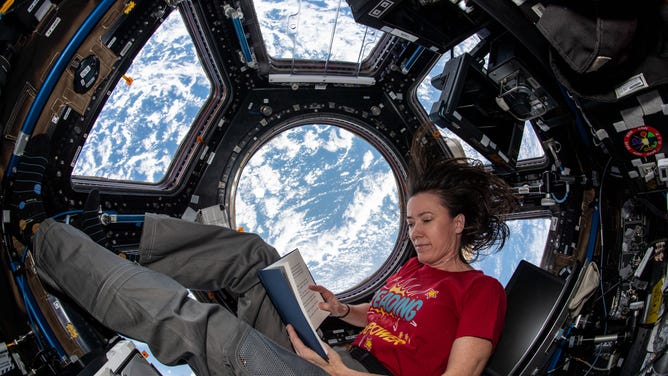
NASA astronaut Megan McArthur reads a book inside the seven-windowed cupola, the International Space Station's window to the world.
(NASA)
An international crew of seven astronauts live and work aboard the station at all times, usually staying for an average period of about six months.
During their stay, crew members spend their time conducting scientific experiments and maintaining the station.
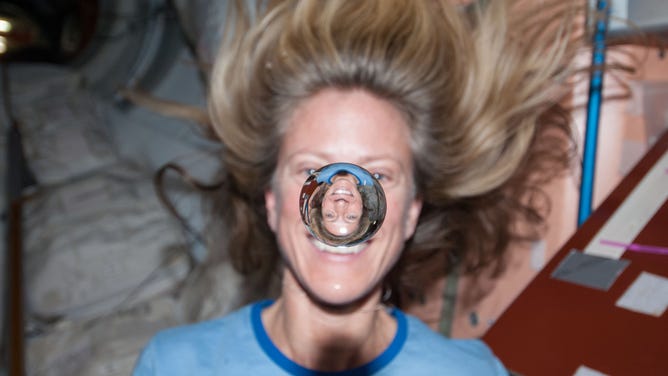
A water bubble floats freely aboard the International Space Station, where many investigations focus on fluid physics due to the microgravity environment.
(NASA)
This regularly requires the astronauts to conduct spacewalks, more than 250 of which have been required thus far for assembly, maintenance and upgrades.

Astronaut Randy Bresnik participates in a spacewalk, or extravehicular activity (EVA), as part of construction and maintenance of the International Space Station.
(NASA)
SPACEWALKING ASTRONAUTS INSTALL SOLAR ARRAY OUTSIDE SPACE STATION
Astronauts also have to exercise for a minimum of two hours daily to help mitigate the loss of muscle and bone mass that comes with living in the station’s microgravity environment.
Off the Earth, for the Earth
Since its inception, the ISS has operated as a demonstration platform for new technologies as well as a research laboratory for breakthroughs not possible on Earth.
More than 3,000 experiments have been conducted so far in a wide array of fields, including biology, physics, medicine, astronomy and meteorology.
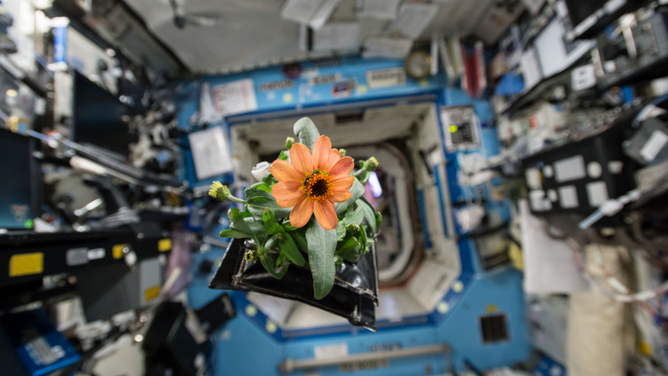
An orange zinnia floats in the International Space Station, the first flower grown as part of a successful effort to grow flowers and lettuce in space.
(NASA)
Station activities and research have led to numerous beneficial applications, ranging from new products in home air and water purification, treating wounds with cold plasmas, and tracking technology for laser eye surgery to a non-invasive method for monitoring temperature in hospitalized infants.
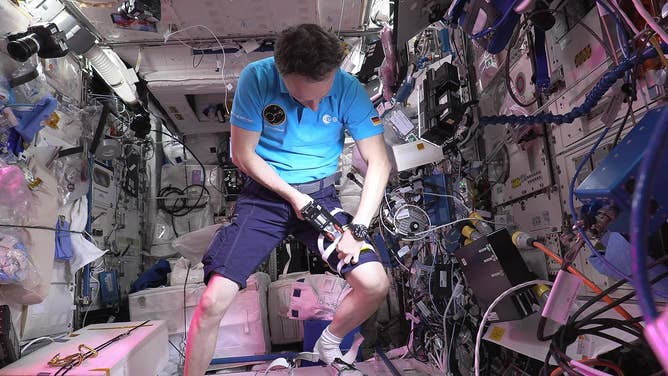
ESA astronaut Matthias Maurer testing the Bioprint FirstAid experiment by German Aerospace Center (DLR) on the International Space Station. The device 3D prints a custom wound patch on demand using a bioink made from the patient’s cells.
(ESA/NASA / NASA)
The space station also served as a springboard for NASA's low-Earth orbit commercialization initiatives in 2022 by hosting the first private astronaut mission, Axiom 1.
A steppingstone to deep space
Even after two decades in orbit, the International Space Station continues to play a pivotal role in the future success of human space exploration.
Working with commercial partners like SpaceX and Boeing as part of NASA's Commercial Crew Program, the ISS is an important stepping stone for NASA’s Artemis program back to the moon.
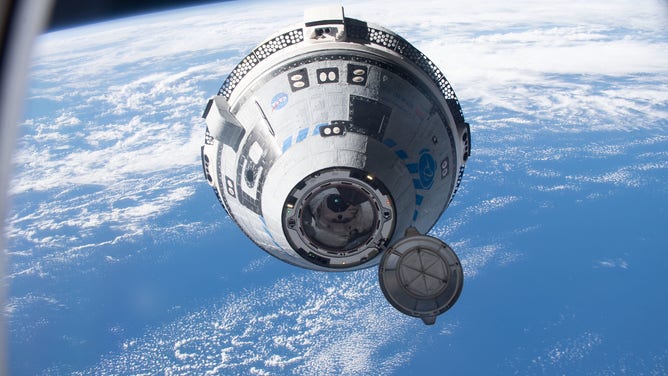
Boeing's CST-100 Starliner crew ship approaches the International Space Station on the company's Orbital Flight Test-2 mission as part of NASA's Commercial Crew Program.
(NASA)
As we look to the moon and beyond, the invaluable insights gleaned from ISS testing of new technologies and research on the long-term effects of space on the human body will help us travel farther into space than ever before.
